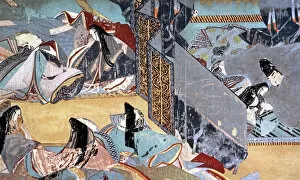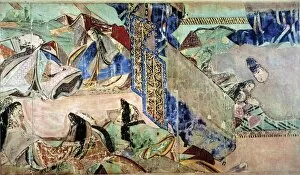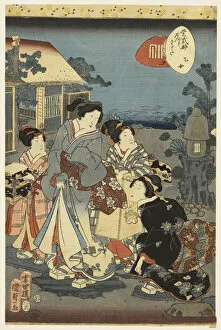Murasaki Collection
Murasaki, a name that resonates with the rich literary heritage of Japan
All Professionally Made to Order for Quick Shipping
Murasaki, a name that resonates with the rich literary heritage of Japan, and is synonymous with one of the most influential writers in Japanese history - Murasaki Shikibu. Born around 978 and believed to have lived until 1014 or 1031, she was not only a novelist but also a poet and lady-in-waiting at the Imperial court during the Heian period. Her magnum opus, "The Tale of Genji, " stands as an enduring masterpiece even after centuries have passed. This epic narrative takes us on a journey through the intricate web of relationships in Heian-era aristocracy, captivating readers with its exquisite portrayal of human emotions and societal intricacies. Scroll paintings from this era depict scenes from Murasaki's tale, such as Niou-no-miya and the sixth daughter of Prince Genji shown together. These delicate artworks transport us back to ancient Japan, allowing us to immerse ourselves in the world created by Lady Murasaki's words. In later centuries, artists like Kaiho Yusetsu continued to be inspired by her work. The Genji Monogatari Emaki showcases their interpretation of key moments from this timeless saga. Woodblock prints further brought these stories to life for wider audiences; one such print depicts a scene from Madame Murasaki's masterpiece in vibrant colors. Murasaki's influence extends beyond literature into other art forms as well. Tawaraya Sotatsu's painting titled "Carriage of Prince Genji" captures the elegance and grace associated with her characters' lives. Even today, we find references to Murasaki throughout Japanese culture. Hananosumika flowers bloom delicately like purple gromwell (Wakamurasaki), paying homage to her legacy. Parodies featuring Lavender (Wakamurasaki) add humor while acknowledging her impact on storytelling traditions. Lady Murasaki Shikibu may have left this world long ago, but her words continue to resonate with readers worldwide.






















